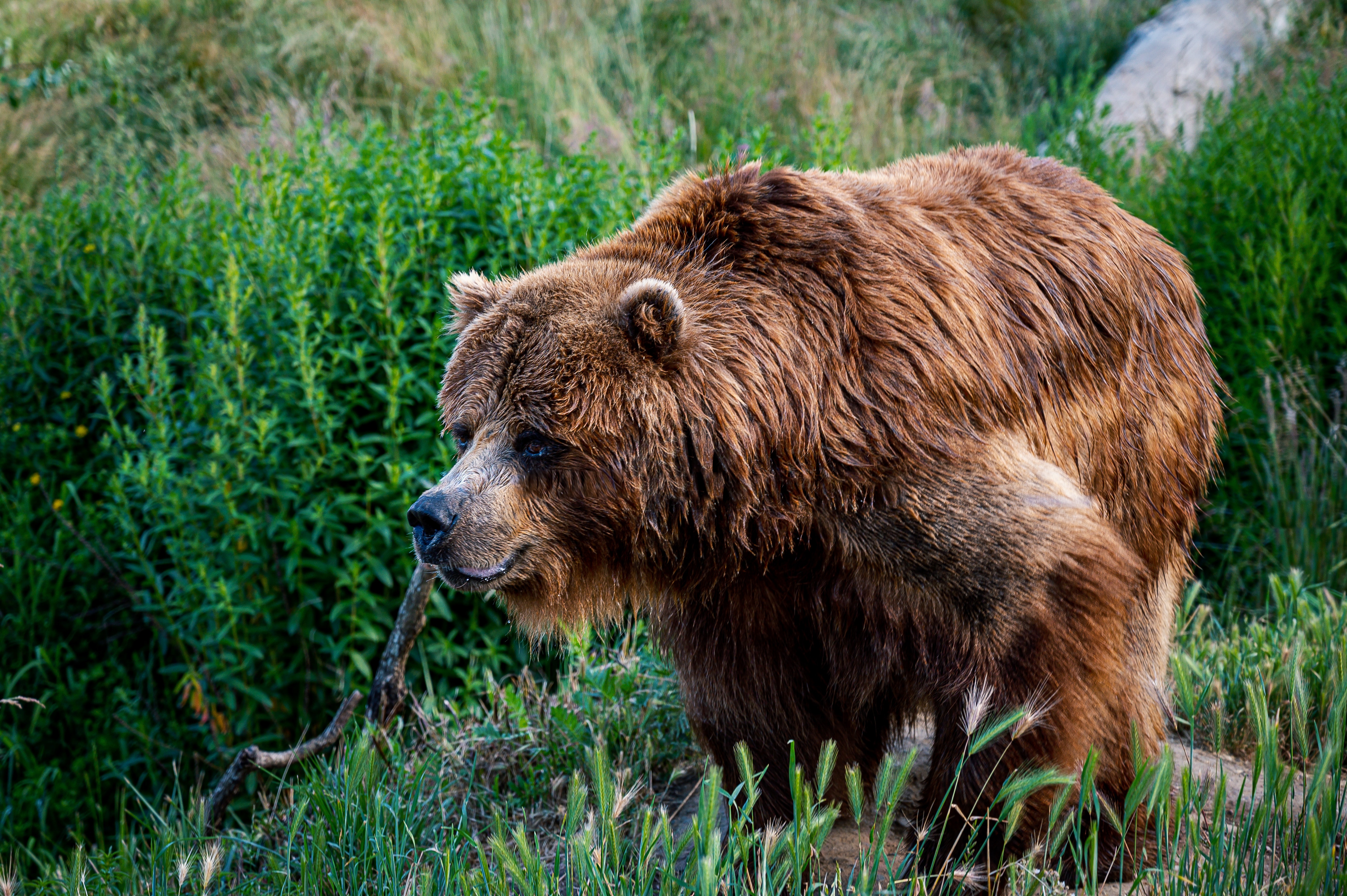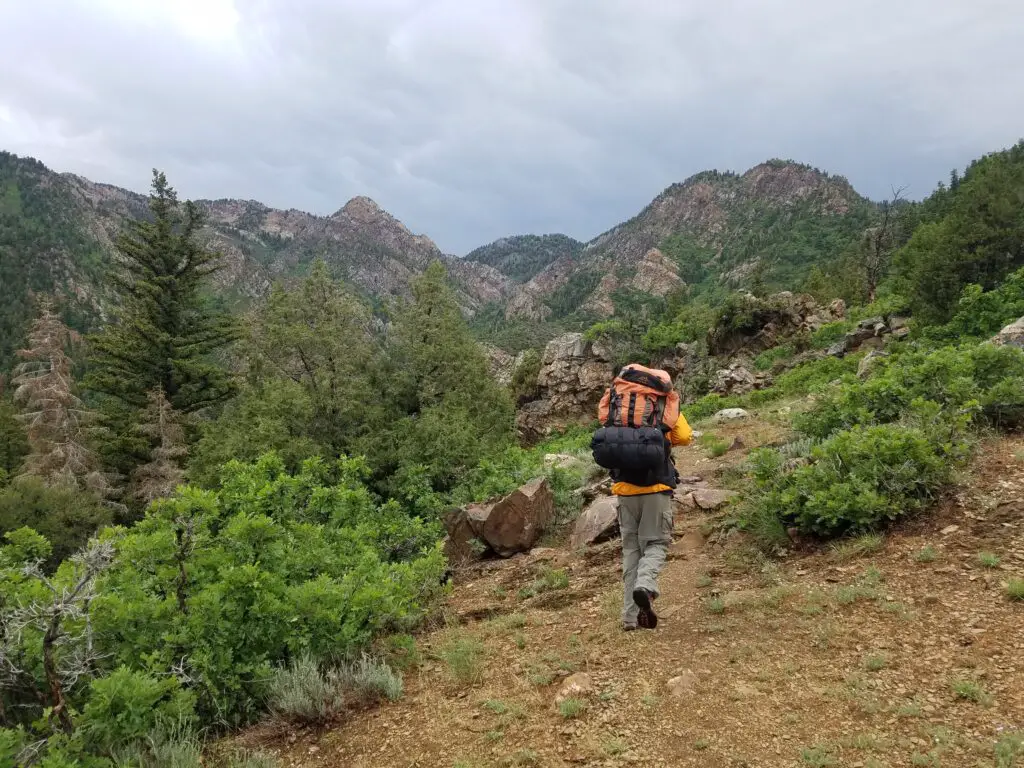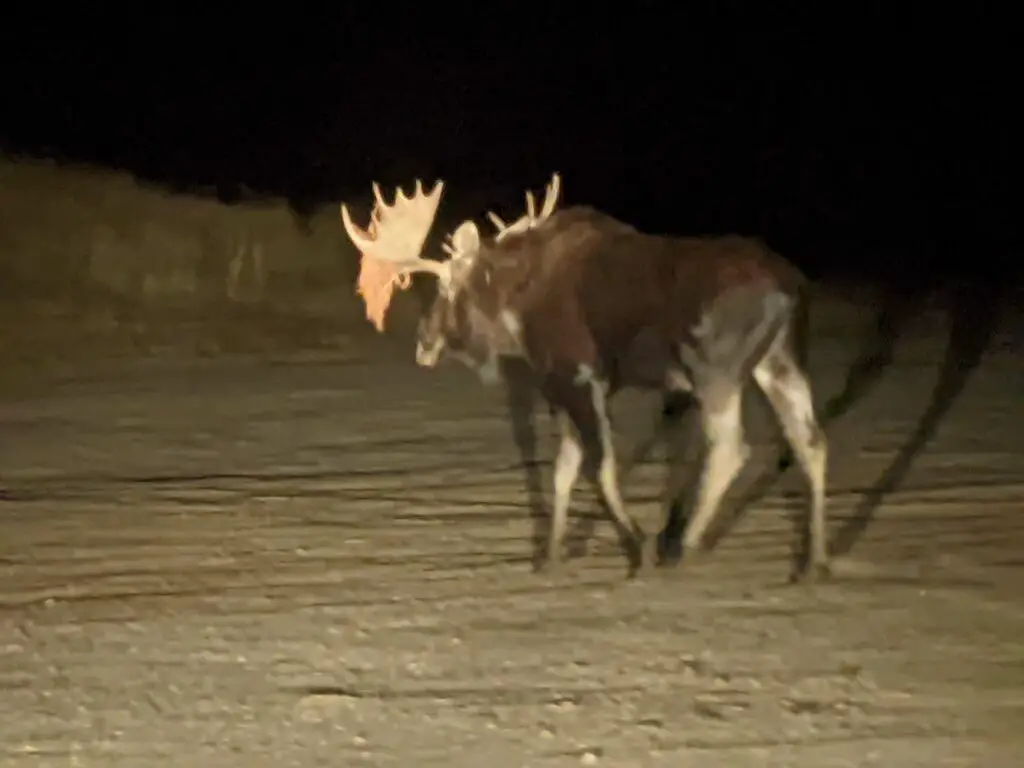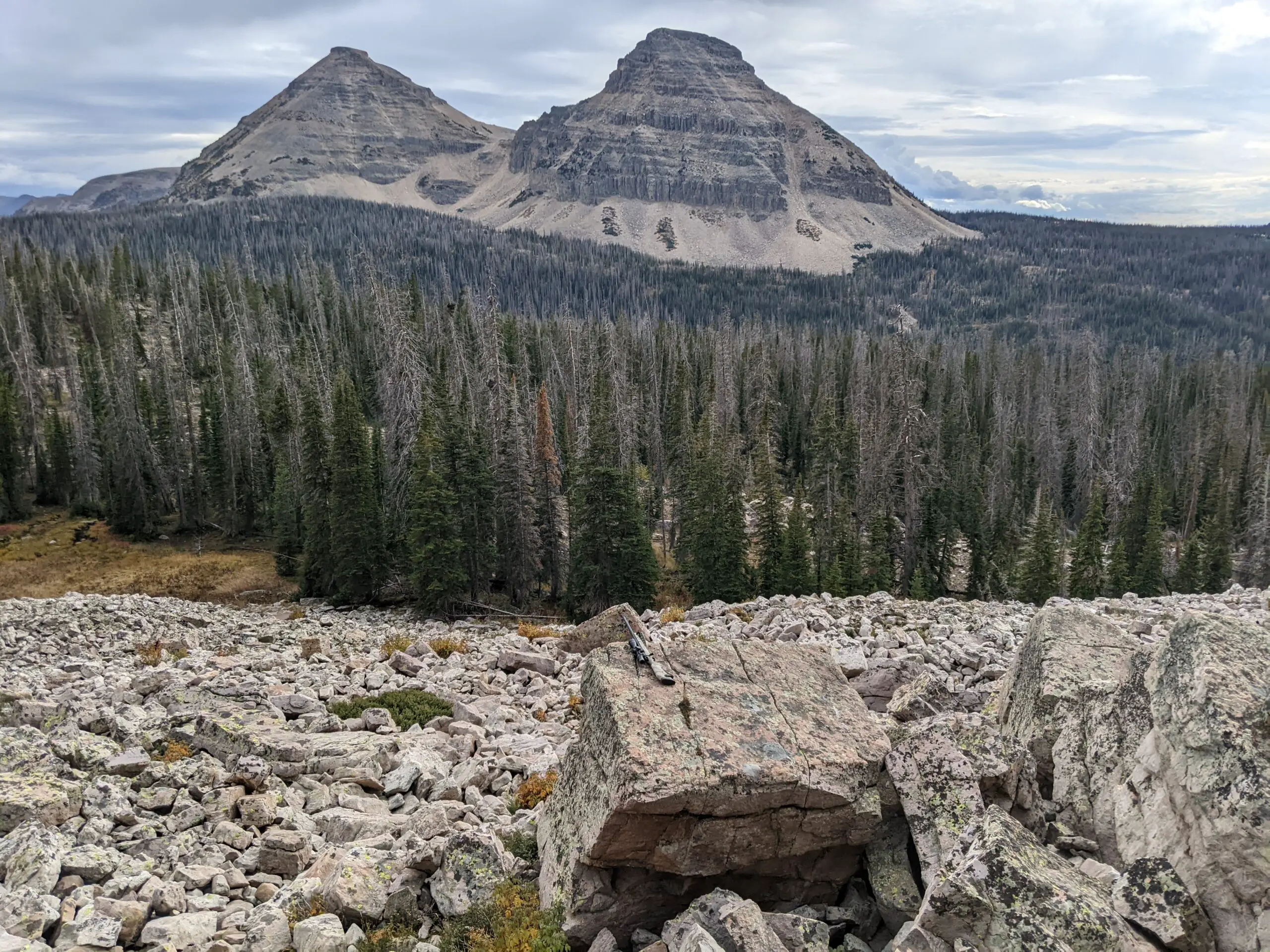Lions and Tigers and Bears, oh my! The woods have pretty much always been a place of beauty, peace, and solitude. That solitude though can lead to feelings of being unsafe due to things like wild animals, and it’s only natural to want to protect yourself. Should Hikers Carry Guns?
It is not recommended that hikers carry guns in most areas because they are much more likely to have a gun-related accident than to successfully use it for self-protection. Attacks in the wilderness by wild animals, or even dangerous people, are extremely rare. In areas with a presence of large predators like bears, bear spray is more effective than a gun.
For most people, packing a gun on a hike is just extra weight that at worst, presents the possibility of accidental injury. Most hikers will never come face-to-face with a predator in a situation where it would even be legal to shoot it, even if the hiker were able to pull a gun out and hit the target. There are a few instances though where carrying a gun hiking could be a good idea, which I’ll go into below.
Hiking and Guns
From the time that guns were brought to the United States, it would be largely unthinkable to travel through wild areas without the protection of a gun. All wild animal populations were significantly larger than they are now (source ), along with the risk of attacks by other humans.
), along with the risk of attacks by other humans.
At that time though, guns weren’t thought so much as a protection as a tool for hunting and obtaining food. Most Americans today have never killed and eaten an animal, let alone via hunting with a gun (source ).
).
Dangers of Hiking
I grew up in Utah, and went to college here. I’ll always remember my first day at school when a roommate from back east walked in and asked, “Y’all have bears out here?” I replied that we do, as well as cougars, and he pulled out a small 3 inch pocket knife and responded, “You think I could take a bear with this?”
At that point, despite having spent just about 1-2 weekends camping per month for much of my life, I’d never come across a bear or mountain lion. About once a year there would be a story in the news about someone’s encounter with a bear or someone’s experience being stalked by a mountain lion, but any injury or death was few and far-between.
Any time a wild animal kills a human it makes national news. Think about that- anytime a wild animal anywhere in the US or even North America kills a human, it’s a big enough deal that everyone wants to read about it! That’s just how rare it is.
Another aspect of wild animals is that you get comfortable with the animals in the area where you live. For my roommate, the thought of bears made him somewhat nervous (and probably excited, if we’re being honest).
I remember my first trip to Florida as a teenager, and the idea that there were alligators in the waterways was just insane. I kept having to remind myself that tons of people lived there and they were all fine with it- otherwise they’d be eradicated. Still, it was something I was cautious about whenever we were near water.
The danger presented to hikers by wild animals are far, far less than the dangers of benign things like falling, getting lost, medical issues (heart attacks), and heat or cold exposure (source ). Hikers are much better served by taking a first aid course and carrying a first aid kit than they would be by bringing a handgun.
). Hikers are much better served by taking a first aid course and carrying a first aid kit than they would be by bringing a handgun.

When Hiking with a Gun is a Good Idea
Statistically, hiking with a gun is for peace of mind and a (false?) sense of security. Hiking trails are safe compared to anywhere else in the world, wild animal encounters are extremely rare, and for some reason criminals prefer cities to the woods (Robin Hood excluded).
Bringing a gun hiking isn’t always a bad idea. There are definitely some situations, and especially some locations, where it can be beneficial and could save your life.
Carry a Gun When Hiking Alone
Animal attacks are extremely rare, if not completely nonexistent for groups of 3 or more people. In very seldom instances an animal will attack a group of two, but only if they’re threatened or starving. A wild animal is somewhat more likely to attack a single hiker than any group.
Popular hiking trails generally have the same effect as hiking with a group, so you’re unlikely to scare anything up. I recommend sticking to more popular areas if you do choose to hike alone because you’re much more likely to be found quickly if you take a fall or suffer a medical emergency (source ).
).
The risk to hikers of other humans isn’t negligible, but is probably lower than in cities. A gun may be a good deterrent against people with unsavory motives or could be a good idea if hiking in regions with drug trafficking.
If you do hike alone frequently, especially in bear country or areas with a predator presence on remote trails, it may make sense to carry a gun. The gun needs to be accessible at a moment’s notice because predators are likely to sneak up on you or wait for you to cross them on a trail.
Bears and Mountain Lions are not the only animals to be wary of. Moose, angry Bull Elk, and even feral pigs can also present a danger in some situations.
Carry a Gun in Certain Hiking Areas
Where I live in the desert, the need to carry a gun is almost zero. There are no large predators, and even the crime rate is next to none. There are really no reasons to carry a firearm.
In other areas it can make a lot more sense. If you plan to hike off trail anywhere in bear or cougar country by yourself, you need to have a gun or bear spray (more on bear spray’s efficacy below). It needs to be within arm’s reach, which may be difficult when working through thick brush or trees.
Additionally, if you hike in areas with a known drug or smuggling presence, or areas with a known drug abuse presence, it can be a good idea to have one for additional peace of mind. It’s unfortunate that this is the condition many people live in.
Hikers with Advanced Firearm Training
If you aren’t trained and well-practiced, any gun or weapon you draw can be taken and turned against you. More likely though, is that you’ll make a mistake and miss the shot and risk hurting someone. Unless you are comfortable and confident with the gun you hike with, it’s best just to leave it at home.
I should point out that most people who carry guns probably think they’re in the top tier of gun owners as far as training goes. Be honest about your capabilities and consider the downside of what could happen if you make a mistake and hurt yourself or someone else.
Why Hiking with a Gun is a Bad Idea
I do think that hiking with a gun is usually not necessary, and often a bad idea. I usually have one with me camping, but in order to keep it safe it’s pretty out of reach and generally inaccessible. These are the considerations you should weigh before bringing one hiking.
Weight
A typical handgun with a big enough caliber to stop an animal weighs between 1.5 and 4 pounds. That is a significant weight to haul around the mountains all day, especially on a backpacking trip where every ounce is measured.
where every ounce is measured.
There are a lot of things I would carry that would be more likely to prevent injury that weigh less than that, things like a first aid kit, satellite messenger, extra headlamp, extra snacks, or firestarter. If you’re concerned at all about the weight you’re carrying while hiking, and you should be , a gun would be an easy thing to leave at home.
, a gun would be an easy thing to leave at home.
Storage
Another big issue with hiking is the transportation of the gun. Any good hiking backpack will have a waist belt that allows you to shift the weight of the pack from your shoulders to your hips- which is right where most people carry a handgun.
Your options are to carry a gun inside your backpack, which largely defeats the purpose because it become so inaccessible in an immediate threat, or to secure it to your backpack’s waist belt or stow it in some sort of sling bag across your chest. Either of these other options can have a higher risk of it getting snagged on something or dropped.
Additionally, you have to consider it getting in the way if there is any scrambling along the trail where you end up using your hands.
When at home, you should be keeping that gun in some sort of safe with the bullets separate from the firearm. On the trail you’ll want them to be accessible and likely loaded, but without a round chambered. Hiking with a chambered round and the safety on is a bad idea because it doesn’t take much for the safety to flip off accidentally.
It’s also extremely important, just as it is at home, to be cognizant of who has access to the weapon during the hike. If you’re hiking with a teen or child, make sure the gun is on your person at all times.
Accidents
Every year there are stories in the news of hunters who end up getting shot with their own weapons, or by a hunting companion. It should be clear to any gun owner that the gun is no respecter of persons and cannot make any kind of discernment.
If you point a loaded gun at something and pull the trigger, whether intentionally or not, it will go off. This happens hiking when someone chambers a round and counts on the safety to prevent accidental misfire.
It can also happen in a situation when you see an animal and it runs. If you follow it with your gun far enough you may cross line of sight with someone else.
Whether you’re a hunter or not, I recommend taking Hunter’s Education Courses if you plan on hiking with a gun. You’ll learn valuable skills related to gun safety in wild environments.

Perception from Other Hikers
America, and the rest of the world, are pretty split on gun ownership. Just seeing a hiker or hunter with a gun can ‘trigger’ some people. Even where legality isn’t an issue, it can still be a good idea to keep guns out of sight (if concealed carry is an option) or leave them at home.
Some people will freak out if they see a gun because of their perception of the world. It’s important to be a responsible gun owner and do your best to avoid messing with those people.
Legality
It shouldn’t come as a surprise to anyone that guns are not legal in all places. For example, it may be legal to carry a gun inside a national park, but it is often against the law to carry it inside any buildings within that National Park. It’s crucial to know just where open carry versus concealed carry is allowed, and where they’re banned altogether.
Private land owners can set rules for their own property, as can many types of public land. You’re pretty much always allowed to carry in National Forests and BLM land, but it makes sense to check for sure in the specific areas before risking getting into trouble.
It’s important to be especially aware of the laws between states as they can vary quite significantly. If you plan to travel to another state to hike or if your trail crosses state boundaries, check into the legality of carrying a firearm in each area.
Do Hikers Carry Guns?
People from outside the United States may be surprised to learn that 99+% of hikers don’t carry guns, which is counter to the prevailing narrative. Most hikers weigh the odds of needing a gun in the woods and decide to take their chances.
The type of hikers who carry guns in the woods tend to be the same type of people with an every day carry in public. They do it for peace of mind, despite the understanding of the utilization statistics. Again, hikers are more likely to carry guns in remote areas with a higher density of predators.
Bear Spray vs. Firearms
Multiple studies of bear encounters have found Bear Spray to be more effective than guns at driving the bear away. In fact, one study referenced below found that, “firearm bearers suffered the same injury rates in close encounters with bears whether they used their firearms or not.”
As mentioned earlier, it can be easier to carry bear spray within arm’s reach since it’s more compact and lighter weight than a handgun that could handle a bear. Additionally, bear spray can be sprayed continuously back and forth, while a bullet has to find it’s mark with each shot.
Bullets seem to anger and threaten the bear, while bear spray tends to cause them to run away. A few bullets may not stop a bear as well.
Lethality is also a factor to consider with bear attacks. It can be difficult to prove that an incident with a bear was self-defense versus poaching, so it could get you in trouble with the DWR if you end up killing one.
It’s far easier to hit a bear with bear spray than with a gun, and the bear is more likely to turn and flee with bear spray than with a bullet.
Studies:
Smith, Tom & Herrero, Stephen & LAYTON, CALI & Larsen, Randy & JOHNSON, KATHRYN. (2012). Efficacy of Firearms for Bear Deterrence in Alaska. The Journal of Wildlife Management. 76. 1021-1027. 10.2307/41519446.

What Type of Gun would be Best to Carry Hiking?
A few years ago I drew a buck tag for the muzzleloader hunt. It was the first experience I’d ever had with a muzzleloader, and I was amazed at how slow it was to reload after firing! Powder, slug, rod, primer, and finally ready to fire again.
About 3 days into my hunt we were approaching a stand of aspen trees when suddenly out jumped a huge bull moose! In that instant I felt the power dynamic shift. I had felt like the mighty hunter looking for a buck to jump out of the trees, but when a big moose came out instead, my muzzleloader felt very inadequate for protecting myself.
The most popular bear gun that people carry into the back country is a .44 Magnum Revolver. A revolver is nice because it’s faster and easier to quickly cock the hammer with one hand. Many people also find that they jam less frequently.
Many hikers just bring their everyday carry weapon with them into the woods, often a 9mm or some other mid-weight handgun. It works as the ‘peace of mind’ discussed earlier, but is likely inadequate if you come across a Grizzly.
if you come across a Grizzly.
Summary
Most hikers do not carry guns because the likelihood of a) needing a gun and b) the gun working to neutralize a threat is just extremely low. Bear spray is likely a better deterrent against threats like predators- animal or human. If you do choose to carry a gun hiking, be sure to train and truly become an expert with the weapon.
Related Questions
Can you Backpack with a Gun? In many areas, backpackers can carry a gun; however, backpackers need to be aware of the laws and regulations in each area through which they’ll pass. They also need to review concealed carry regulations. A gun can provide peace of mind, but is often impractical in real life-or-death scenarios.
Is Bear Spray Better than a Gun? Bear Spray has been found to be more effective than guns in encounters with bears in the wild. This is because Bear Spray can be fanned back and forth, and will disperse a bear with contact, while a bullet will only be adequate if it hits the brain stem or if multiple shots hit the target.
Is 9mm Good for Hiking? A 9mm is adequate for medium to small predators like coyotes or wild pigs, but is usually inadequate for bears or even mountain lions. Depending on the wildlife in the area, a larger caliber gun like a .44 Magnum Revolver is more reliable. Bear Spray is the best option as a predator-deterrent.

